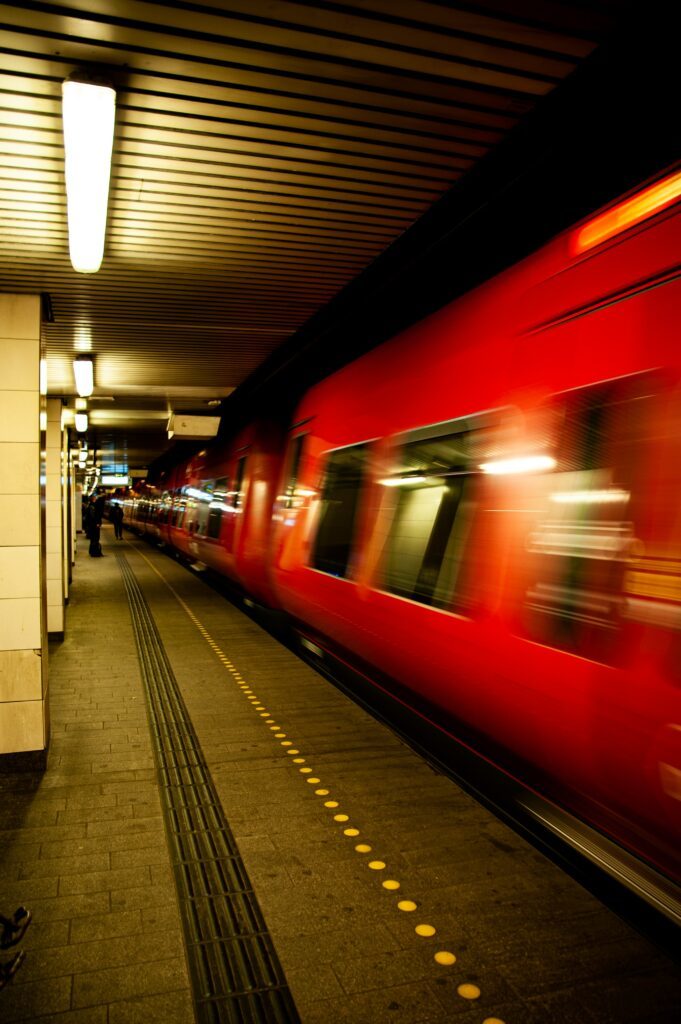The Future, But Sustainable: Climate-resilient transit hubs
We’re spinning towards climate-resilient transit hubs, according to Glenn Frommer and Anne Leemans
UN statistics reveal the world’s population annually grows on average by 83 million. This means 83 million more people appeal to resources and services. Under a business as usual scenario, this can only lead to resource exhaustion and depletion, as it puts more and more strain on what is naturally available and needed.
Considering current consumption patterns, it takes nature 1.5 years to replenish what we have consumed in a single year. Clearly this cannot be sustained. We need to think further than we do at present and limit the damage to the planet as well as to the existence of future generations of all living beings. Urban mobility accounts for 40% of all CO2 emissions of road transport and up to 70% of other pollutants from transport. As designers with an across-the-board vision, we integrate mobility as it impacts the quality of life in our cities, the individual health of citizens, and how it affects the spendable budget of citizens. Well-conceived and efficiently managed transportation hubs and stations generate employment and revenue for cities.
Refurbishment of mobility systems
Most cities have legacy mobility systems: buses, trams, local trains, intercity trains, high-speed trains, cycles, and much more. Some systems are old and many have not been properly maintained. Our cities cannot start over from scratch but need to implement efficient and focused refurbishment and regeneration in taking steps toward thinking and sustainable cities. This should be an integral part of the Green New Deal. While prioritizing resource efficiency, it is vital we develop new social and economic activity models in co-generation with our citizens. We can no longer limit ourselves to the use, re-use, recycle, re-purpose and retrofit objectives. We need to get rid of silo-thinking and share, compare and integrate thoughts, approaches and systems.
Most cities have legacy mobility systems: buses, trams, local trains, intercity trains, high-speed trains, cycles, and much more. Some systems are old and many have not been properly maintained. Our cities cannot start over from scratch but need to implement efficient and focused refurbishment and regeneration in taking steps toward thinking and sustainable cities. This should be an integral part of the Green New Deal. While prioritizing resource efficiency, it is vital we develop new social and economic activity models in co-generation with our citizens. We can no longer limit ourselves to the use, re-use, recycle, re-purpose and retrofit objectives. We need to get rid of silo-thinking and share, compare and integrate thoughts, approaches and systems.
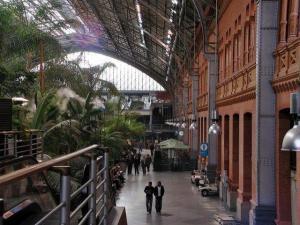
Madrid Atocha station
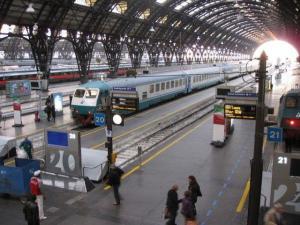
Milano Centrale
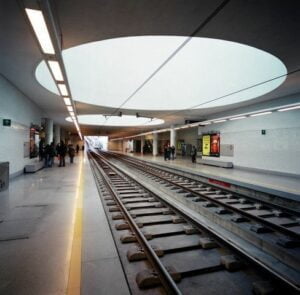
Oporto casa da musica
At Yellow design Foundation, we have been developing an integrated assessment methodology using digital mapping that guides mobility providers, authorities and regulators in balancing their perceived security, safety, environment and energy use. We prioritize interventions and provide a roadmap for changes to operational protocols, equipment and infrastructure to provide economic benefits while improving passenger safety. The assessment also supports mobility professionals in their continuing improvement focusing on building relationships and strengthening focus on serving customers.
A frequently occurring example: just think of the impact lighting has on our perceived security when walking over a walking bridge or in a tunnel heading for the platform to catch the train. In case it is a dark tunnel with blind areas, it is more likely to appear threatening. Moreover, precisely because of the darkness it might not be thought to need as frequent nor as thorough cleaning.
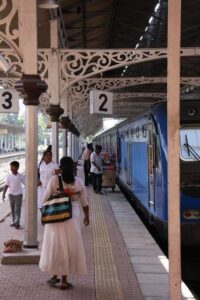
Sri Lanka Kandy station
To exacerbate the problem even more, similar contexts are often prone to generating moisture and mould problems. Next also, waste and a blocked drainage could create an unhealthy and threatening environment. Clearly colour, choice of materials and lighting influence our perceived and objective security, our well-being and with that energy consumption.
Integrating performance and maintenance
Security doesn’t go without energy. The assessment of their use, performance and maintenance needs to be integrated. With regards to transit stations, the next question was how we can offer optimal – perceived - security to travellers, visitors and passers-by against a minimal carbon footprint while contributing to climate resilience.
We had done research in several countries in Europe as well as in South and South East Asia, into the link between design and perceived security, and more specifically, into what drives or dissuades passengers to opt for mass transit. The results were enlightening and allowed us to develop an improved appreciation for the linkages and drivers, and this has resulted in a new methodological approach (SPIN UP, Security Perception in Intermodal stations for Urban Public transport). We have used this methodology to establish what makes (or breaks) a station in terms of diverse user management, complexity of services on offer, the types and numbers of modes, their interconnectivity, their resource use and their maintenance.
Through our integrating approach, we developed and structured a body of over 120 practical guidelines, applicable to project definitions for stations soon to be refurbished or renovated. But encouraged by the results of our assessments, we started looking into options to reach station managers providing a smart and easy-to-use tool that would adapt to each station configuration and would simplify the analysis of buildings that were constructed, extended, renovated, repurposed at different times in their existence.
Creating efficiencies
We developed a process to assess a building designed at various moments by different engineering and architectural firms allowing current insight and appraisal for today’s users. From an endless number of questions, we have shortened the long-list, went back to the drawing desk and allowed flexibility, openness and communication to guide our digital tools.
As we know, stations serve cities and their communities. Post COVID-19 this will be no different, be it that station managers will have to increase their investment in protective equipment and communications to passengers on their effort to step up their maintenance and cleaning activities and on the products they use and sell. We also know that just like every city or every neighbourhood, every station is different and needs to be considered by a diverse set of parameters. For this reason, we developed a web-based smart application (SPIN APP) that adapts to any station configuration and complexity (levels, modalities, interchanges etc).
By its design, SPINAPP indicates which element in a specific location in the station does not operate as intended and negatively impacts its surroundings. By applying a subset of the best practice recommendations, performance can be vastly improved with a set of collateral measures that leverage adapted operational measures, equipment and station design. For example, this can focus on platform areas with insufficient sight lines, deficient areas of speech intelligibility that can negatively impact emergency egress, or suggest simple improvements for passenger information signage and flow guidance. SPIN APP can also be used to assess energy use and carbon footprints of different stations permitting focus on areas of resource inefficiency and wastage.
Everybody wins
Practice has demonstrated that when applied methodically, SPIN APP generates simple radar medallions that communicate a prioritization of those locations where improvements are necessary. Further, as station teams are suggested to share information, the assessment also stimulates interdepartmental cooperation and transparency and, last but not least, a higher sense of customer support. The results of the effort provide management a summarized list of necessary improvements in a cost-effective hierarchy, leveraging changes to operations, equipment utilization and infrastructure. And above all they realize noticeable improvements to perceived security and passenger satisfaction while reducing resource utilization and carbon footprint.
In a nutshell, the application is in line with eight of the 17 SDGs. In terms of Strategy, Governance, Risk and Metrics, the general methodology leverages the one underlying the Task Force on Climate Related Financial Disclosures (TCFD). Yellow design Design Foundation uses the outcome assessments to advise further on resilience methodologies in dealing with climate-related risks and potential treatments. To conclude, we go back to the basic premises we started from: security comes with energy, sustainability is based on circularity and integration, integration means sharing and transparency. We strongly believe these premises are future-proof and have designed SPIN APP accordingly.
Infobox
Yellow Design Foundation is a multidisciplinary, European and interregional platform for research and information on community-oriented design. Our main fields of activity are mobility, urban planning and placemaking.
SPIN APP A smart web-based app, that assesses and integrates security, energy and environment performance of stations and station environments. It is platform agnostic and able to adapt to both very basic station configurations as well as rather sophisticated ones as its use is both meant for stations located in Developed Countries and Least Developed Countries. The collected data is treated in full compliance with GDPR regulation.
Authors: Glenn Frommer is Managing Partner for ESG Matters IVS Copenhagen and Member of the AccountAbility AA1000 Standards Board. Anne Leemans is Secretary General of the Yellow design Foundation.
